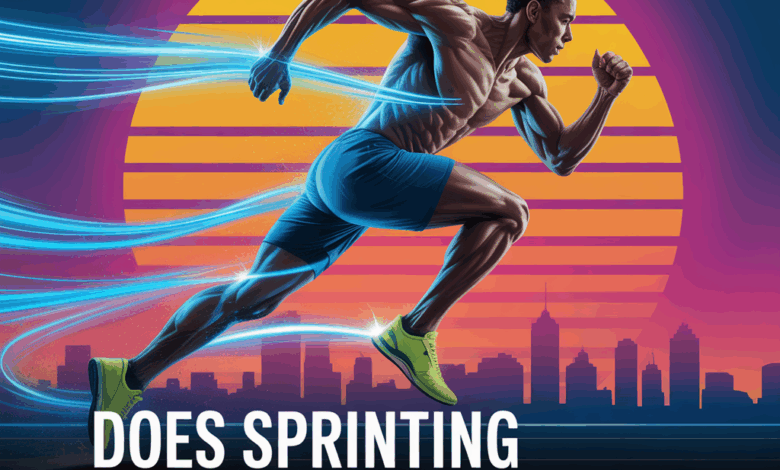Does Sprinting Increase Testosterone? Science, Sprint Workouts, and Practical Tips

Ever stood at the track, heart pounding after a short all-out run, and wondered, “Did that sprint just boost my testosterone?” Whether you’re a weekend warrior, a busy professional trying to stay fit, or someone looking to optimize hormones naturally, the idea that short, intense exercise can improve testosterone levels is intriguing—and believable. In this post we’ll explore the science behind the question “does sprinting increase testosterone,” practical sprint workouts, lifestyle tips, and real-world examples to help you use sprints safely and effectively.
Quick Answer: What Happens to Testosterone When You Sprint?
Sprinting and other forms of high-intensity exercise often produce an acute spike in circulating testosterone and other anabolic hormones. However, the long-term effect on baseline testosterone levels depends on factors like training volume, recovery, age, nutrition and overall lifestyle. In short: sprints can boost testosterone temporarily and contribute to hormone health when combined with sensible training and recovery.
How Sprinting Affects Hormones (The Basics)
High-intensity sprinting triggers a short-term hormonal response: testosterone, growth hormone and catecholamines rise to help mobilize energy and support muscle repair. This is part of the body’s “fight or flight” and adaptation response. But chronic excessive training without recovery can increase cortisol and lead to lower testosterone over time.
Acute vs. Long-Term Effects
- Acute: Short-term increases in testosterone and growth hormone immediately after sprint sessions.
- Long-term: Improved body composition, increased muscle mass, and better insulin sensitivity can indirectly support healthier baseline testosterone. But overtraining, low-calorie diets, and inadequate sleep can negate benefits.
Does Sprinting Increase Testosterone? (Deep Dive)
The question “does sprinting increase testosterone” breaks into two parts: immediate hormone spikes and sustained hormonal improvements. If your goal is a natural testosterone boost, sprinting—especially as part of high-intensity interval training (HIIT)—is one of the most efficient exercise types to include. That said, the magnitude of change varies by age, sex, fitness level, and body fat percentage.
Who Sees the Biggest Benefits?
- Men with higher body fat and lower baseline fitness often see the most noticeable hormonal and metabolic improvements.
- Middle-aged men can get beneficial shifts in hormone balance when combining sprints with resistance training and lifestyle changes.
- Well-trained athletes may experience smaller acute spikes but still gain from improved performance and body composition.
Practical Sprint Workouts to Boost Testosterone and Fitness
Below are sample sprint workouts tailored for beginners, intermediates, and advanced athletes. Always warm up thoroughly and prioritize recovery.
Beginner: Intro Sprint Session
- Warm-up: 10 minutes dynamic mobility and light jog
- Workout: 6 x 20-second all-out sprints (walking back recovery 90–120 seconds)
- Cool-down: 8–10 minutes easy jog/walk and stretching
- Frequency: 1–2 times per week
Intermediate: Hill Sprint Protocol
- Warm-up: 10–12 minutes
- Workout: 8 x 30-second hill sprints with 90 seconds easy walk back recovery
- Bonus: Add two heavy compound weight sessions per week to amplify anabolic stimulus
- Frequency: 2–3 times per week
Advanced: Track Sprint Session
- Warm-up: 15 minutes with mobility + build-up runs
- Workout: 10 x 100m sprints at ~90% effort, full recovery (3–5 minutes) between reps
- Cool-down and mobility work
- Frequency: 2–3 times per week, alternating with weight training
Complementary Habits That Support Testosterone
Sprinting alone isn’t a magic bullet. Combine sprints with these healthy lifestyle strategies to support hormone balance:
- Strength training: Heavy compound lifts (squats, deadlifts, rows) are proven to support testosterone and muscle mass.
- Nutrition: Eat sufficient calories, prioritize protein (0.7–1.0 g/lb bodyweight for active people), and include healthy fats (avocados, olive oil, nuts) which support steroid hormone production. Consider vitamin D and zinc if levels are low.
- Sleep: Aim for 7–9 hours nightly—sleep deprivation lowers testosterone.
- Stress management: Excessive chronic stress raises cortisol, which can blunt testosterone over time. Use breathing, meditation, or walk breaks to recover.
- Body composition: Reducing excess body fat often improves testosterone; sprints help with fat loss when paired with proper diet.
Signs You Might Be Overdoing It
Sprinting too frequently without enough rest can reduce testosterone and impair health. Watch for:
- Persistent fatigue or decreased performance
- Low mood or poor sleep
- Declines in strength or libido
- Elevated resting heart rate
If these occur, reduce sprint volume, add extra recovery days, prioritize nutrition and sleep, and consider swapping a session for a low-intensity endurance or mobility day.
Real-World Example: How One Busy Dad Increased Energy and Strength
Jake, 42, worked long hours and felt low on energy. He added two sprint sessions per week (6–8 x 30-second hill sprints), two weight training sessions, prioritized 8 hours of sleep, and increased his daily protein. In 12 weeks he lost body fat, gained lean mass, and reported better stamina and libido. His example shows how sprinting, combined with smart lifestyle changes, can support healthier testosterone and overall wellness.
Frequently Asked Questions
You may notice acute boosts in energy and mood immediately after sessions. Meaningful long-term changes in baseline testosterone can take weeks to months and depend on diet, sleep, body fat, and total training load.
Yes. Women also benefit from high-intensity exercise for metabolic health, body composition, and hormone balance. The hormonal responses differ from men, but sprinting is a time-efficient tool for improved fitness and wellbeing.
Short, intense sprints are more likely to produce acute anabolic hormone spikes than long steady-state cardio. However, a balanced program that includes strength training, sprints, and occasional longer aerobic sessions is optimal for overall health and hormone balance.
Conclusion — Does Sprinting Increase Testosterone?
Sprinting can increase testosterone—especially in the short term—and, when combined with resistance training, good nutrition, sleep, and recovery, it contributes to improved hormone health over time. If your goal is to naturally support testosterone and overall fitness, add 1–3 sprint sessions per week, prioritize strength training, and adopt supportive lifestyle habits.
Ready to try a sprint plan? Start with the beginner workout above and track how you feel for 4 weeks. For more structured programs, explore our workout routines, browse practical tips in our nutrition guides, and check related wellness tips to build a sustainable approach. Share your progress or questions in the comments — let’s sprint smarter, not just harder.





